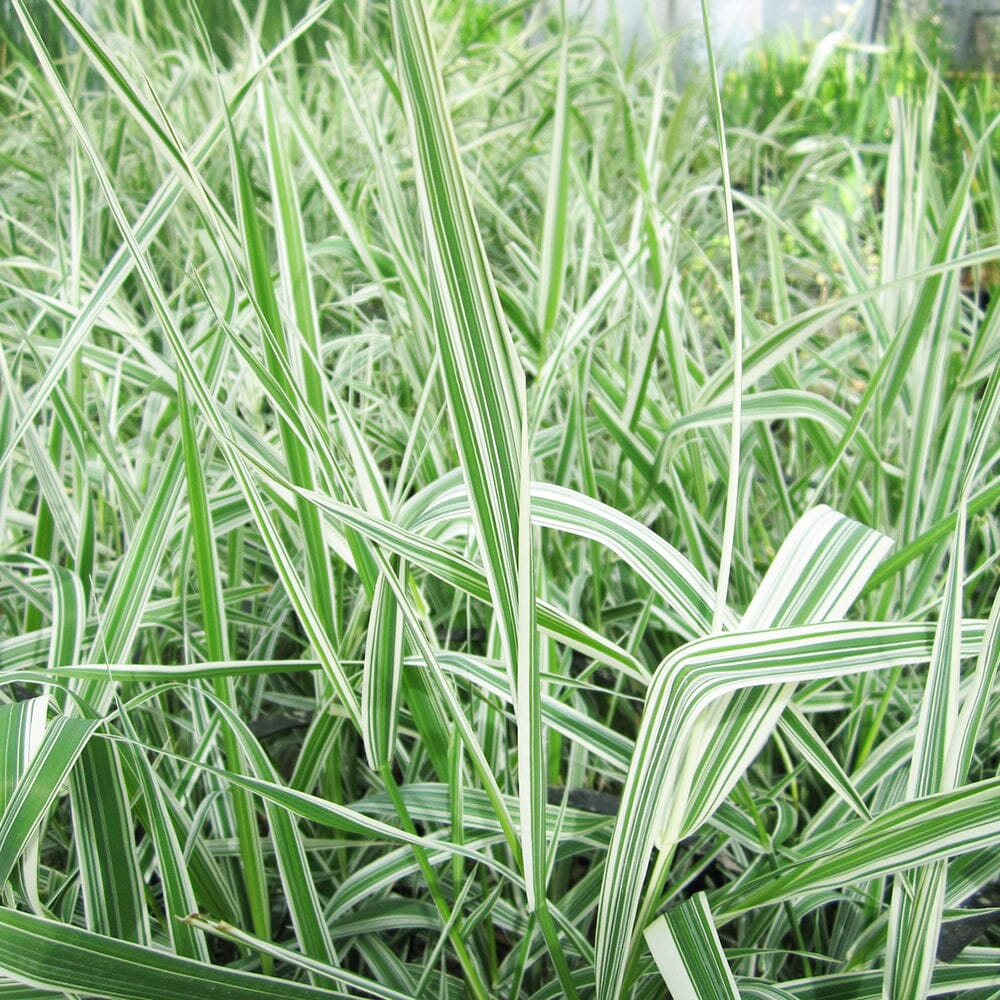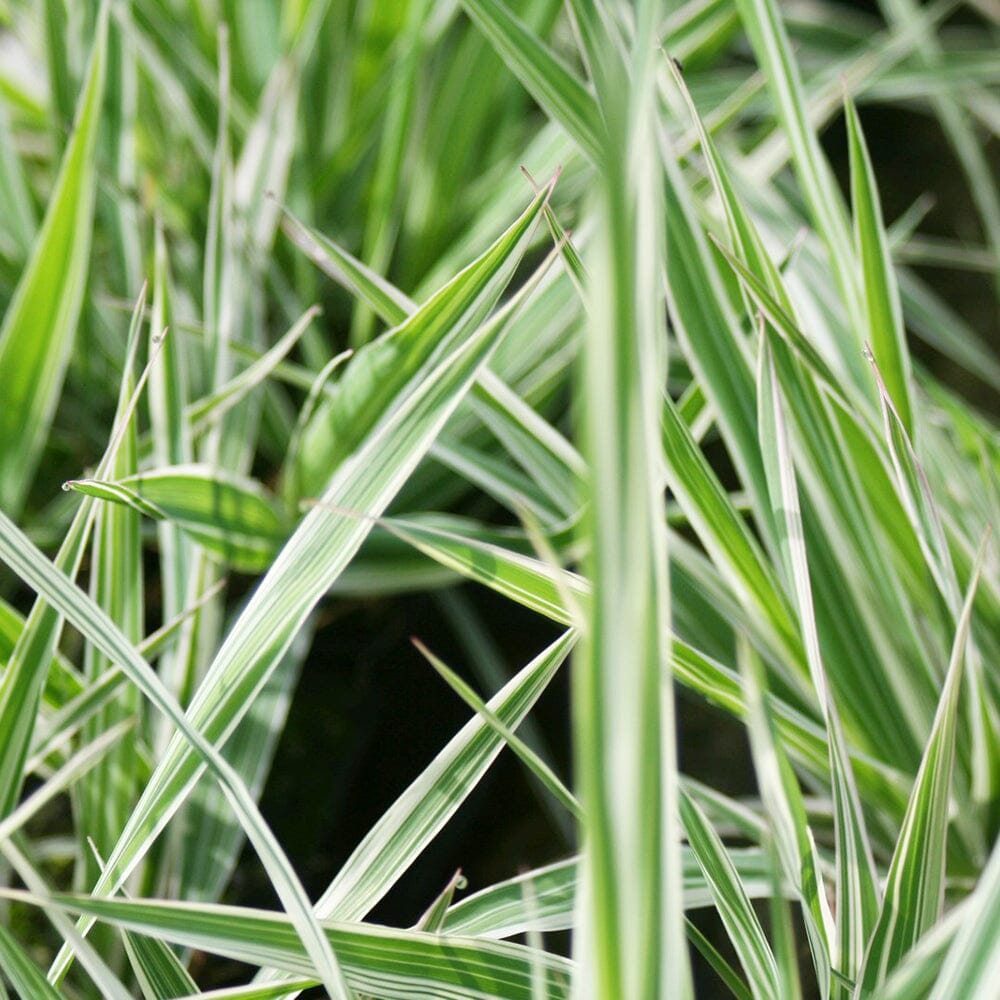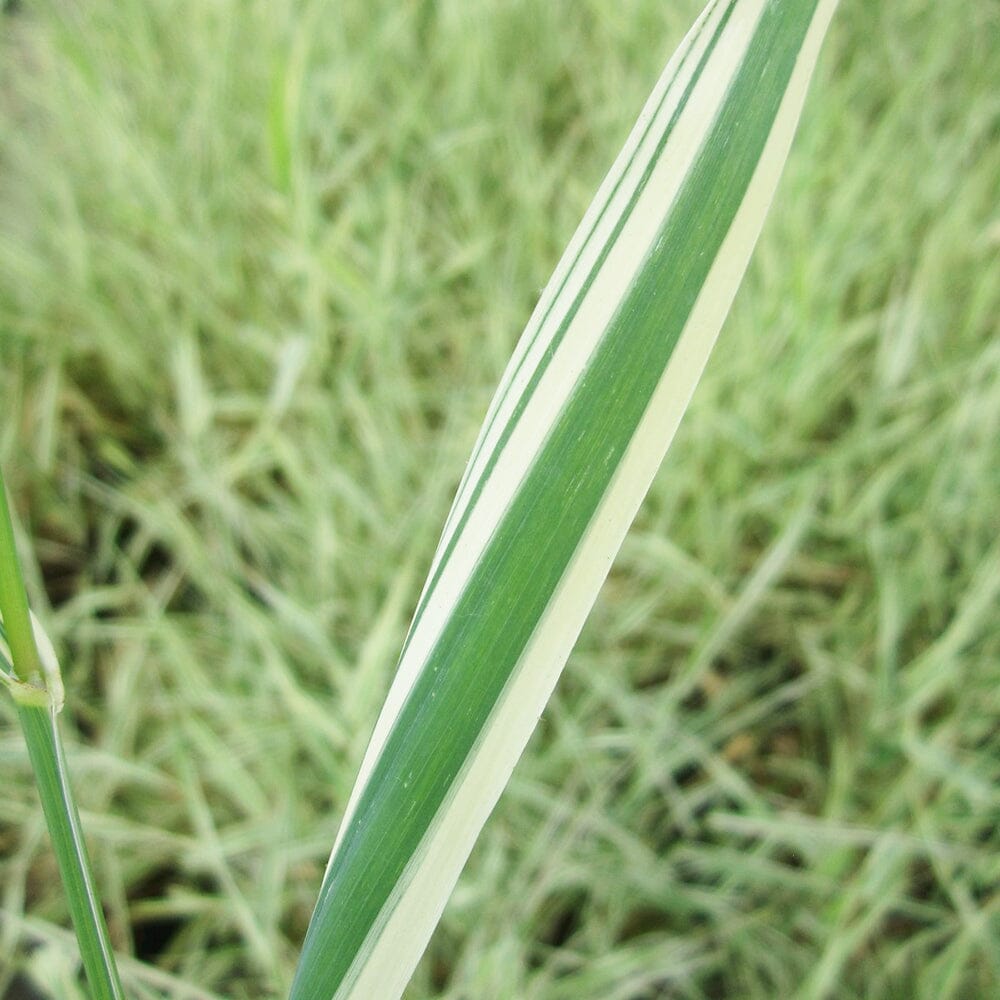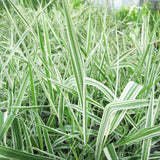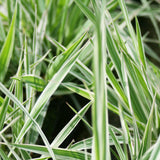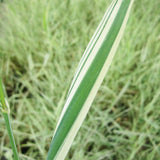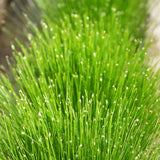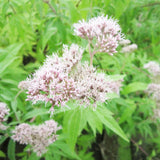Phalaris Arundinacea Var Picta Aquatic Pond Plant - Ribbon Grass
Phalaris arundinacea var. picta, commonly known as Ribbon Grass or Gardener's Garters, is a perennial grass prized for its attractive variegated foliage. Here's a detailed description and care guide for Phalaris arundinacea var. picta:
Description:
Phalaris arundinacea var. picta forms dense clumps of arching stems that can reach heights of 2 to 3 feet (60 to 90 cm). The stems are adorned with variegated leaves that are linear in shape and about 4 to 10 inches (10 to 25 cm) long. The leaves feature striking green and white stripes that run the length of the blade, creating a ribbon-like appearance. In early summer, the plant produces inconspicuous flowers on tall, slender stems, which are often cut back to maintain the focus on the foliage. The variegated foliage of Phalaris arundinacea var. picta makes it an excellent choice for adding color and texture to garden borders, containers, or water features.
Care Guide:
Lighting: Phalaris arundinacea var. picta thrives in full sun to partial shade. It prefers a location with at least 4-6 hours of direct sunlight per day for optimal growth and coloration. However, it can tolerate some shade, particularly in hotter regions where partial shade can help protect the variegated foliage from intense sunlight.
Soil: Ribbon Grass is adaptable to a wide range of soil types, including loam, clay, or sandy soil. However, it prefers moist, fertile soil that is well-draining. It can tolerate slightly acidic to slightly alkaline soil conditions. Before planting, amend the soil with organic matter, such as compost or well-rotted manure, to improve its fertility and drainage.
Watering: Phalaris arundinacea var. picta appreciates consistent moisture, especially during hot and dry periods. Keep the soil evenly moist, but avoid waterlogging or prolonged water saturation, as it can lead to root rot. Water deeply when the top inch of soil feels dry, and adjust the frequency based on the weather conditions and moisture requirements of your specific growing area.
Temperature: Ribbon Grass is hardy in USDA hardiness zones 4-9. It can tolerate a range of temperatures, including both cool and warm climates. Provide protection from extreme temperature fluctuations, especially during winter months. In colder regions, a layer of mulch can help insulate the plant's roots and protect them from freezing temperatures.
Fertilizer: Phalaris arundinacea var. picta generally does not require heavy fertilization. However, you can provide a balanced, slow-release fertilizer in early spring to promote healthy growth and vibrant foliage. Follow the manufacturer's instructions for dosage and application methods. Avoid excessive fertilization, as it can lead to excessive foliage growth and diminish the variegation.
Maintenance: Ribbon Grass is relatively low-maintenance. Remove any dead or yellowing leaves to maintain a tidy appearance. It can be an aggressive spreader, so consider containing it within borders or using barriers if you want to restrict its growth. Regularly monitor for any unwanted spreading and remove the excess growth promptly.
Pests and Diseases: Phalaris arundinacea var. picta is generally resistant to pests and diseases. However, it may occasionally attract snails or slugs. Monitor the plant for any signs of pest infestation and take appropriate measures if necessary. Good air circulation and avoiding overhead watering can help prevent leaf diseases.
By following these care guidelines, you can successfully grow Phalaris arundinacea var. picta in your garden or landscape. Adjust the care routine based on your specific growing conditions and monitor the plant for any signs of stress or pest infestation. With proper care, Ribbon Grass will provide a striking display of variegated foliage, adding visual interest and contrast to your outdoor spaces.
Selection:
Research different species of marginal pond plants to find ones that suit your pond's conditions and your aesthetic preferences. Consider factors such as height, flower colour, foliage texture, and seasonal interest when selecting plants.
Placement:
Observe the natural conditions of your pond, such as sun exposure, soil type, and water movement, and choose plants that are adapted to those conditions. Create different planting zones around the pond, with plants that prefer wet soil closer to the water's edge and those that tolerate drier soil further away.
Sunlight:
Marginal plants typically thrive in full sun to partial shade. Some species can tolerate more shade, but for optimal growth and flowering, provide them with at least 6 hours of direct sunlight per day.
Water Depth:
Determine the water depth requirements of the marginal plants you choose. Some plants prefer water up to 6 inches deep, while others can tolerate water up to 12 inches or more. Ensure that the water level remains consistent within the preferred range for the chosen plants.
Soil:
Marginal plants prefer a rich, loamy soil that retains moisture but is not waterlogged. Amend the soil with organic matter, such as compost or well-rotted manure, to improve its fertility and drainage. Avoid using heavy clay soil, as it can become compacted and restrict root growth.
Planting:
Dig a hole slightly larger than the root ball of the plant and loosen the soil at the bottom. Place the plant in the hole, ensuring that the crown is level with or slightly above the soil surface. Backfill the hole with soil and gently firm it around the plant to eliminate air pockets. Water thoroughly after planting to settle the soil and provide initial hydration.
Mulching:
Apply a layer of organic mulch around the base of the plants to suppress weeds, conserve moisture, and regulate soil temperature.Use materials like straw, shredded bark, or compost, and maintain a depth of 2-3 inches.
Watering:
Marginal plants prefer consistently moist soil but should not be waterlogged. Monitor the moisture level regularly and water as needed to keep the soil evenly moist. During hot and dry periods, provide supplemental watering to prevent the soil from drying out.
Fertilization:
Marginal plants generally do not require heavy fertilization if the soil is nutrient-rich. However, if growth appears weak or leaves show signs of nutrient deficiencies, apply a balanced slow-release fertilizer according to the manufacturer's instructions.
Maintenance:
Remove any yellowing or dead leaves to maintain plant health and appearance. Divide overcrowded plants every few years to prevent competition for resources and promote vigorous growth. Prune back excessive growth to maintain a tidy appearance and to prevent plants from encroaching on other plants or the pond itself.
Winter Care:
Hardy marginal plants can withstand winter temperatures and require minimal care. Cut back dead foliage in late fall or early spring to tidy up the planting area. In colder regions, consider protecting tender plants with a layer of mulch or covering them with burlap during winter to prevent frost damage.
Monitoring and Troubleshooting:
Regularly inspect plants for signs of pests, diseases, or nutrient deficiencies. Address any issues promptly with appropriate treatments, such as organic insecticides, fungicides, or nutrient amendments. By following these detailed tips and providing proper care, you can create a beautiful and thriving planting zone around your pond, enhancing its visual appeal and supporting a diverse ecosystem.








